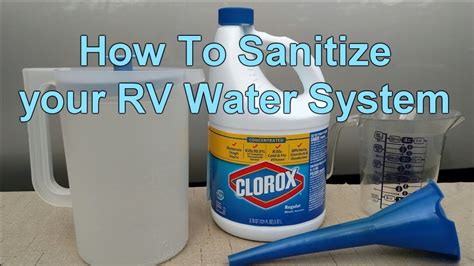Prevent RV Water Tank Algae: Simple Disinfection Techniques
Keeping your RV's water tank clean and free of algae is crucial for safe and enjoyable camping trips. A contaminated water tank can lead to unpleasant tastes, odors, and even potential health issues. Fortunately, preventing algae growth is achievable with simple disinfection techniques and regular maintenance. This article will guide you through effective methods to keep your RV water tank fresh and algae-free.
What Causes Algae Growth in RV Water Tanks?
Algae thrive in warm, stagnant water with ample sunlight. Your RV's freshwater tank, often sitting idle for extended periods, provides the perfect breeding ground. Sunlight penetrating through the tank walls, combined with leftover water and organic matter, fuels algae proliferation. Even trace amounts of contaminants can stimulate growth.
How to Prevent Algae in Your RV Water Tank
Preventing algae is far easier than dealing with a full-blown infestation. Proactive measures are key. Here's a breakdown of effective prevention strategies:
1. Regular Cleaning and Flushing
This is the cornerstone of algae prevention. After each trip, thoroughly flush your tank. This removes residual water and any organic matter that could feed algae.
- The Process: Open both the city water and the low-point drains to completely flush the system. Let water run for several minutes to ensure all standing water is expelled.
2. Using a Water Tank Treatment
Several effective water tank treatments are available, designed specifically to prevent algae and bacteria growth. These usually contain bleach or other disinfectants. Always follow the manufacturer's instructions carefully regarding dosage and contact time.
3. Employing Bleach for Disinfection
Bleach is a highly effective, inexpensive, and readily available disinfectant. It's crucial to use the correct concentration.
- The Process: Add unscented household bleach (5% sodium hypochlorite) to your tank. The general recommendation is 1/4 cup of bleach per 10 gallons of water tank capacity. Fill the tank with water, ensuring the bleach is thoroughly mixed. Let it sit for at least 12 hours (longer is better, up to 24 hours). Then, thoroughly flush the system again. Important: Always rinse the tank completely after using bleach to remove any residual bleach smell or taste.
4. Keeping the Tank Full
Filling your tank, even when not in use, can help reduce algae growth. A full tank leaves less space for algae to establish itself and minimizes sunlight penetration.
5. Proper Winterizing
Before storing your RV for the winter, proper winterizing is vital. This involves completely draining the system and using RV antifreeze to prevent freezing and potential damage. This also helps prevent algae growth during extended storage.
Frequently Asked Questions (PAAs)
Here we address some common questions about RV water tank algae prevention:
How Often Should I Clean My RV Water Tank?
Ideally, you should clean your RV water tank after every trip. At a minimum, aim for cleaning and disinfecting at least every three months, or before extended storage.
What are the Signs of Algae in My RV Water Tank?
Signs of algae include murky, green or brown water, slimy residue, and a musty or earthy odor. If you notice any of these, immediate cleaning and disinfection are necessary.
Can I Use Vinegar to Clean My RV Water Tank?
Vinegar can help remove some mineral deposits and odors, but it’s not as effective as bleach in killing algae and bacteria. It's best used as a supplementary cleaning agent after a bleach treatment.
Is it Safe to Drink Water from an RV Tank Without Treatment?
No, it is generally unsafe to drink water directly from an RV water tank without proper treatment and disinfection. The risk of contamination with algae, bacteria, and other harmful substances is significant.
What if I have a persistent algae problem?
If you're continually battling algae, consider professional cleaning services, or investigate potential leaks or cracks in your tank that might be allowing contaminants in. Also, ensure proper ventilation around the tank to minimize moisture buildup.
By following these simple preventative measures and regularly maintaining your RV's freshwater tank, you can enjoy clean, safe, and refreshing water on all your adventures. Remember, prevention is key to avoiding costly repairs and ensuring a worry-free camping experience.

